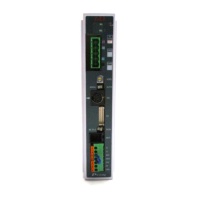
Do you have a question about the IAI PCON-C and is the answer not in the manual?
| Communication interface | RS-232C, RS-485, Ethernet |
|---|---|
| Power supply | 24V DC |
| Output Type | Transistor |
| Number of Inputs | 8 |
| Number of Outputs | 8 |
| Humidity | 85%RH or less (Non-condensing) |
| Vibration Resistance | 4.9 m/s² |
| Storage Temperature | -20 to 60°C |
Provides a general overview of the PCON controller's features and benefits.
Details the system setup and component connections for PCON controllers.
Step-by-step guide for unpacking the controller and performing initial setup.
Outlines the warranty period and scope of coverage for the PCON controller.
Outlines the fundamental technical specifications of the PCON controller.
Identifies and explains the function of each part of the PCON controller.
Provides the physical dimensions and mounting information for the controller.
Specifies the recommended environmental conditions for controller installation.
Details the necessary power supply specifications for the controller.
Explains methods for eliminating noise and proper grounding techniques.
Describes how to connect the I/O cables for various PIO patterns.
Provides instructions for connecting the actuator to the controller.
Details the process for connecting the communication cable to the SIO connector.
Explains PIO patterns and their associated signal assignments.
Provides in-depth explanations of individual input and output signals.
Explains the structure and usage of the position table for programming movements.
Details the different operational modes of the controller, like Positioning and Push & Hold.
Describes power-saving modes applicable at standby positions.
Guides the user through the initial startup process for the controller.
Describes the procedure for performing home return to establish the home position.
Details the operation and conditions for the push & hold mode.
Explains how to perform jogging and teaching operations via PLC or teaching pendant.
Lists all available parameters with their category, unit, and default settings.
Provides in-depth explanations for key parameters related to stroke, operation, and interface.
Illustrates a typical connection setup for multi-axis configurations using SIO converters.
Explains the function and usage of the optional SIO converter for multi-axis linking.
Details how to set the address switch for proper multi-axis addressing.
Outlines general steps for diagnosing and resolving operational problems.
Details alarm levels, causes, and actions for effective diagnosis.
Addresses specific issues encountered during operation and their potential solutions.
Lists compatible actuators, their strokes, speeds, and load capacities.
Provides instructions for checking and replacing the cooling fan.
Presents a sample positioning sequence for practical implementation.